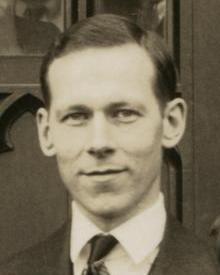
Robert Sanderson Mulliken was an American physicist and chemist, primarily responsible for the early development of molecular orbital theory, i.e. the elaboration of the molecular orbital method of computing the structure of molecules. Mulliken received the Nobel Prize in Chemistry in 1966 and the Priestley Medal in 1983.
Martin David Kamen was an American chemist who, together with Sam Ruben, co-discovered the synthesis of the isotope carbon-14 on February 27, 1940, at the University of California Radiation Laboratory, Berkeley. He also confirmed that all of the oxygen released in photosynthesis comes from water, not carbon dioxide, in 1941.

Argonne National Laboratory is a federally funded research and development center in Lemont, Illinois, United States. Founded in 1946, the laboratory is owned by the United States Department of Energy and administered by UChicago Argonne LLC of the University of Chicago. The facility is the largest national laboratory in the Midwest.

Kazimierz Fajans was a Polish American physical chemist of Polish-Jewish origin, a pioneer in the science of radioactivity and the co-discoverer of chemical element protactinium.

Chicago Pile-1 (CP-1) was the world's first artificial nuclear reactor. On 2 December 1942, the first human-made self-sustaining nuclear chain reaction was initiated in CP-1 during an experiment led by Enrico Fermi. The secret development of the reactor was the first major technical achievement for the Manhattan Project, the Allied effort to create nuclear weapons during World War II. Developed by the Metallurgical Laboratory at the University of Chicago, CP-1 was built under the west viewing stands of the original Stagg Field. Although the project's civilian and military leaders had misgivings about the possibility of a disastrous runaway reaction, they trusted Fermi's safety calculations and decided they could carry out the experiment in a densely populated area. Fermi described the reactor as "a crude pile of black bricks and wooden timbers".
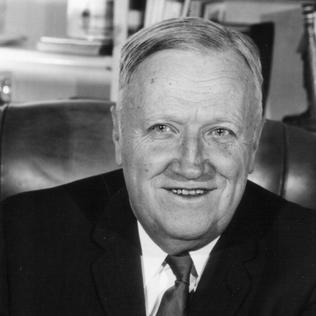
Frank Harold Spedding was a Canadian American chemist. He was a renowned expert on rare earth elements, and on extraction of metals from minerals. The uranium extraction process helped make it possible for the Manhattan Project to build the first atomic bombs.
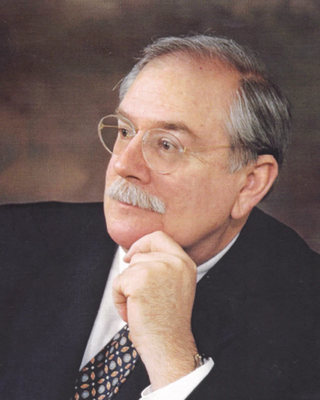
David A. Evans was an American chemist who was the Abbott and James Lawrence professor of chemistry at Harvard University. He was a prominent figure in the field of organic chemistry and his research focused on synthetic chemistry and total synthesis, particularly of large biologically active molecules. Among his best-known works is the development of aldol reaction methodology.

The Metallurgical Laboratory was a scientific laboratory at the University of Chicago that was established in February 1942 to study and use the newly discovered chemical element plutonium. It researched plutonium's chemistry and metallurgy, designed the world's first nuclear reactors to produce it, and developed chemical processes to separate it from other elements. In August 1942 the lab's chemical section was the first to chemically separate a weighable sample of plutonium, and on 2 December 1942, the Met Lab produced the first controlled nuclear chain reaction, in the reactor Chicago Pile-1, which was constructed under the stands of the university's old football stadium, Stagg Field.

Manson Benedict was an American nuclear engineer and a professor of nuclear engineering at the Massachusetts Institute of Technology (MIT). From 1958 to 1968, he was the chairman of the advisory committee to the U.S. Atomic Energy Commission.
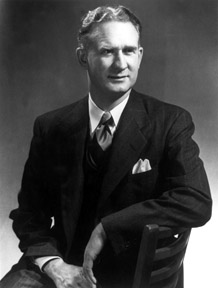
Walter Henry Zinn was a Canadian-born American nuclear physicist who was the first director of the Argonne National Laboratory from 1946 to 1956. He worked at the Manhattan Project's Metallurgical Laboratory during World War II, and supervised the construction of Chicago Pile-1, the world's first nuclear reactor, which went critical on December 2, 1942, at the University of Chicago. At Argonne he designed and built several new reactors, including Experimental Breeder Reactor I, the first nuclear reactor to produce electric power, which went live on December 20, 1951.

Paul Doughty Bartlett was an American chemist.
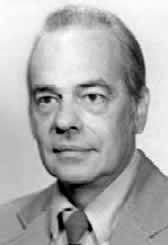
Lawrence Elgin Glendenin was an American chemist who co-discovered the element promethium.
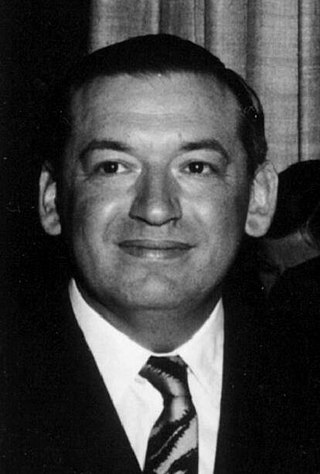
Jacob Bigeleisen was an American chemist who worked on the Manhattan Project on techniques to extract uranium-235 from uranium ore, an isotope that can sustain nuclear fission and would be used in developing an atomic bomb but that is less than 1% of naturally occurring uranium. While the method of using photochemistry that Bigeleisen used as an approach was not successful in isolating useful quantities of uranium-235 for the war effort, it did lead to the development of isotope chemistry, which takes advantage of the ways that different isotopes of an element interact to form chemical bonds.

Isadore Perlman was an American nuclear chemist noted for his research of Alpha particle decay. The National Academy of Sciences called Perlman "a world leader on the systematics of alpha decay". He was also recognized for his research of nuclear structure of the heavy elements. He was also noted for his isolation of Curium, as well as for fission of tantalum, bismuth, lead, thallium and platinum. Perlman discovered uses of radioactive iodine and phosphorus for medical purposes. He played a key role in Manhattan Project's plutonium production.
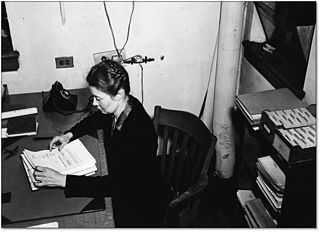
Hoylande Denune Young Failey was an American chemist. During World War II she worked at the Manhattan Project's Metallurgical Laboratory. After the war she became the first woman to be appointed as a division head at the Argonne National Laboratory, and the first woman to chair the Chicago Section of the American Chemical Society.

Elizabeth Rona was a Hungarian nuclear chemist, known for her work with radioactive isotopes. After developing an enhanced method of preparing polonium samples, she was recognized internationally as the leading expert in isotope separation and polonium preparation. Between 1914 and 1918, during her postdoctoral study with George de Hevesy, she developed a theory that the velocity of diffusion depended on the mass of the nuclides. As only a few atomic elements had been identified, her confirmation of the existence of "Uranium-Y" was a major contribution to nuclear chemistry. She was awarded the Haitinger Prize by the Austrian Academy of Sciences in 1933.

Robert B. Duffield was an American radiochemist who worked as part of the Manhattan Project and was director of the Argonne National Laboratory. His main areas of research focused on radioactivity and photonuclear reaction.
African-American scientists and technicians on the Manhattan Project held a small number of positions among the several hundred scientists and technicians involved. Nonetheless, African-American men and women made important contributions to the Manhattan Project during World War II. At the time, their work was shrouded in secrecy, intentionally compartmentalized and decontextualized so that almost no one knew the purpose or intended use of what they were doing.

Robert Percy Barnes was an American chemist and professor, and the first African American person to graduate with a PhD in chemistry from Harvard University. He was also the first African American faculty member hired at Amherst College.

Ralph Gardner-Chavis was an African American researcher, chemist, and educator. He is best known for his involvement in the Manhattan Project, where his research on plutonium would be used to develop the Fat Man atomic bomb. After working on the Manhattan Project, he became a professor at Cleveland State University. He was a major proponent of diversity and racial inclusion in academic studies. He died at age 95 on March 27, 2018.


















